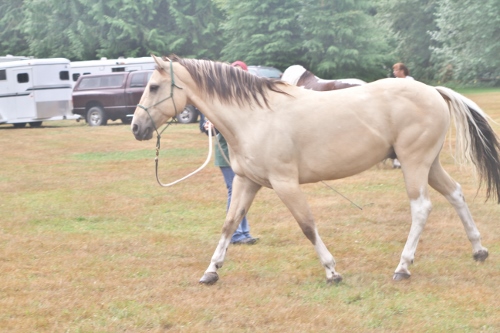
Q:
I am considering buying a colt AQHA. I have never own a horse for myself personally. I would like to know what I would be getting myself into managing and making sure he stays happy and safe, just so I know what is ahead. Since he will be our horse 24/7 and not just being around a horse for few hours a day that’s someone else’s horse. Thanks.,
-James
A:
Hello James,
I”m delighted that you are considering buying a horse! The question you ask requires a much more in depth and varied response than I’m going to give you today, however, should start you well on your path to successful stewardship of your precious new friend.
#1. I highly recommend a pre-purchase exam by a veterinarian that you research and plan to have a close relationship with regarding the ongoing healthcare and maintenance of your new horse. This will launch you into a great start.
#2. Prepare the living area for the horse to include as much area (preferably several acres) to roam as possible. Horses are designed to move a lot, and will be more likely to remain healthier than horses that are confined. Have shelter available for the horse to voluntarily enter and exit at will. Be prepared to keep all areas clean, safe and have a good manure management plan.
#3. Get professional information regarding nutrition for your horse and be sure to have forage available 24/7. Check out slow feeding options for this.
#4. You will need to have a hoof care professional maintain the hooves on a regular schedule, usually every 4 to 8 weeks. Follow the timetable the professional lays out. This timetable may fluctuate according to the needs of the horse.
#5. Find a reputable Structural Integration professional that can help you to maintain the comfort of your horse at intervals you and he/she decide may be needed. Many “behavioral issues “ horses develop turn out to be pain that he is in due to a poor fitting saddle, or trauma or injury you may or may not be aware has happened. Sometimes while frolicking in the pasture a twist or a fall that we missed results in a painful condition that can be corrected with bodywork.
You can expect to spend on the low end roughly $300.00 per month just to maintain your horse doing as much as you can yourself and if there are no illnesses or serious injuries. Of course you will need to be prepared financially to bite the bullet on much higher costs if things don’t go smoothly. Also, keep in mind that this is definitely the short answer to your question. Without knowing much about your horse experience, how prepared you already are with the accommodations for your new best friend, or what the cost of the feed, vet, farrier and property maintenance is in the region you live, the rest will be determined by your local area costs.
Finally, keep in mind that horses are not people. Try not to “humanize” when caring and interacting with your horse. Take time to learn some horse psychology, and may I suggest that you try to maintain him as naturally as possible. There is so much information available regarding horses, learn all you can!
Thank you for your question, and I’m happy that you reached out for help. Don’t stop doing that! Congratulations and enjoy your beautiful new horse!
Sincerely,
Wendy Croney
Galloping Horse Equestrian of Colorado

Wendy Croney has owned and ridden horses her entire life, discovering she has a true talent for effective, gentle horse training as well as teaching horseback riding. She has been training, teaching horsemanship and giving lessons in multiple disciplines for more than 30 years using her own methods developed through experience, as well as learning from Richard Shrake, Clinton Anderson and many others. Wendy is known for an economic approach to horse care and personally provides it to her own horses, including hoof trims. She focuses on creative ways to keep horses as naturally as possible on a tight budget. Wendy has retired from her business, “Galloping Horse Equestrian” in Colorado Springs, CO, however she is still available for consulting and continues the quest to provide the finest horse care for the most effective cost.

